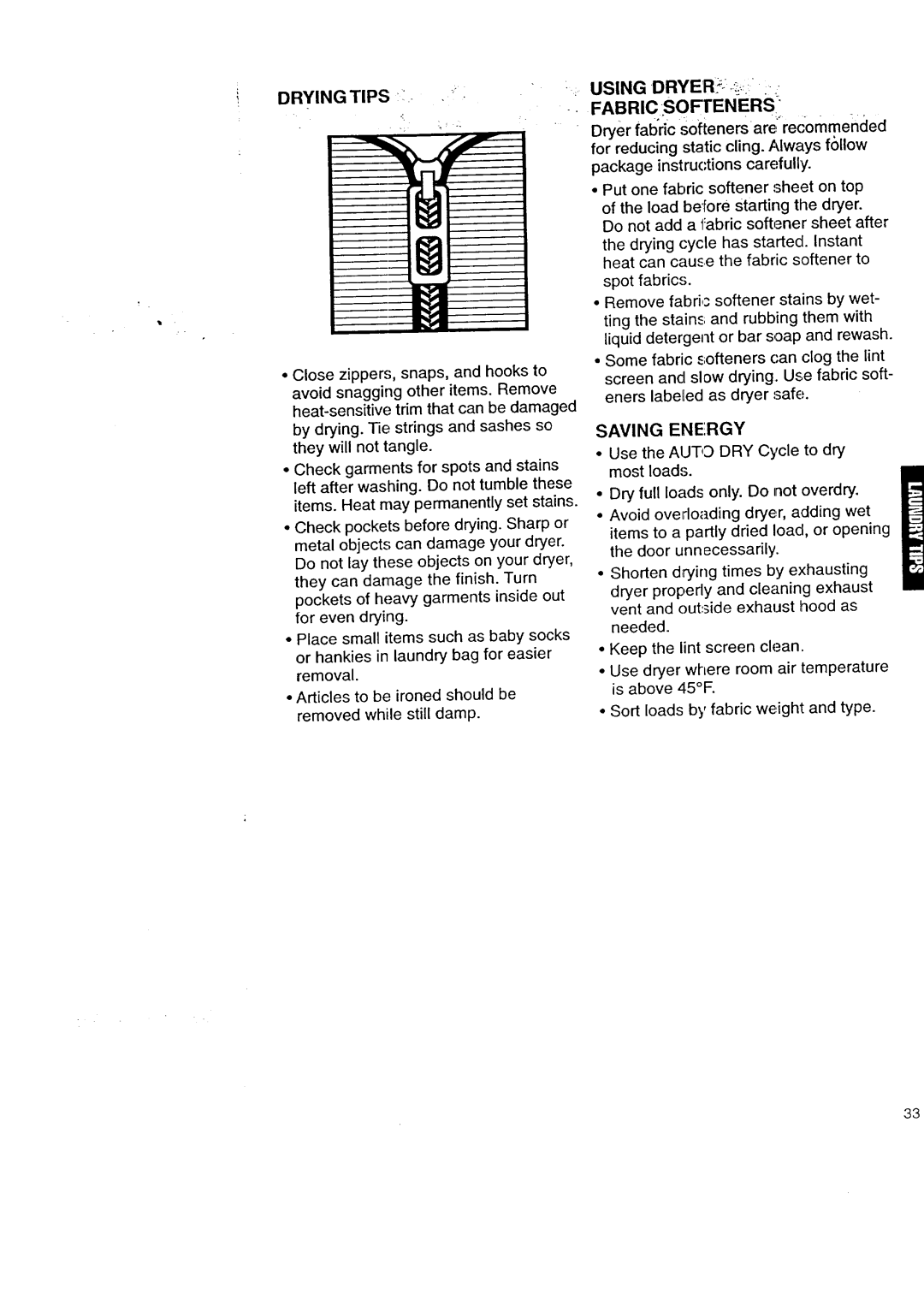
DRYING TIPS :: .-
•Close zippers, snaps, and hooks to avoid snagging other items. Remove
•Check garments for spots and stains left after washing. Do not tumble these items. Heat may permanently set stains.
•Check pockets before drying. Sharp or metal objects can damage your dryer. Do not lay these objects on your dryer, they can damage the finish. Turn pockets of heavy garments inside out for even drying.
•Place small items such as baby socks
or hankies in laundry bag for easier removal.
Articles to be ironed should be removed while still damp.
USING DRYER _,._:. :-_:
FABRICSOFrENERS::
Dryer fabric sof[eners are; recommended for reducing static cling. Always follow package instructions carefully.
•Put one fabric softener sheet on top of the load be'forestarting the dryer.
Do not add a fabric softener sheet after
the drying cycle has started. Instant heat can cause the fabric softener to
spot fabrics.
•Remove fabric softener stains by wet- ting the stains and rubbing them with liquid detergent or bar soap and rewash.
•Some fabric softeners ('an clog the lint screen and slow drying. Use fabric soft- eners labeled as dryer safE:.
SAVING ENERGY
•Use the AUTO DRY Cycle to dry most loads.
•Dry full loads only. Do not overdry.
•Avoid overloading dryer, adding wet items to a partly dried load, or opening the door unnecessarily.
•Shorten drying times by exhausting dryer properly and cleaning exhaust vent and outside exhaust hood as needed.
•Keep the lint screen clean.
•Use dryer where room air temperature is above 45°F.
•Sort loads by fabric weight and type.
3_
